How to photograph Comet NEOWISE: NASA tips for stargazers
Are you excited to spot Comet NEOWISE as it pops into view in the night sky? Do you want to try your hand at photographing the cosmic snowball? Let's take a look at some beginner astrophotography tips from NASA.
Comet NEOWISE, named for NASA's Near-Earth Object Wide-field Infrared Survey Explorer (NEOWISE), the space telescope that first spotted the comet in March, is currently gracing our night skies with its icy presence. It made its closest approach to the sun on July 3 and the comet is now visible to skywatchers in the Northern Hemisphere. It is so bright that, while it can help to use binoculars or a small telescope, the comet and its tail are visible with the naked eye.
You can spot the comet in the night sky after sunset and in the northwest just under the Big Dipper constellation. For those who want to make those skywatching moments last a little bit longer, it can be fun to bring along a camera. But photographing a dark sky and having far-off cosmic objects be visible in the shot can be tricky.
Related: How to see Comet NEOWISE in the evening sky now
More: Best telescopes for the money — 2020 reviews and guide
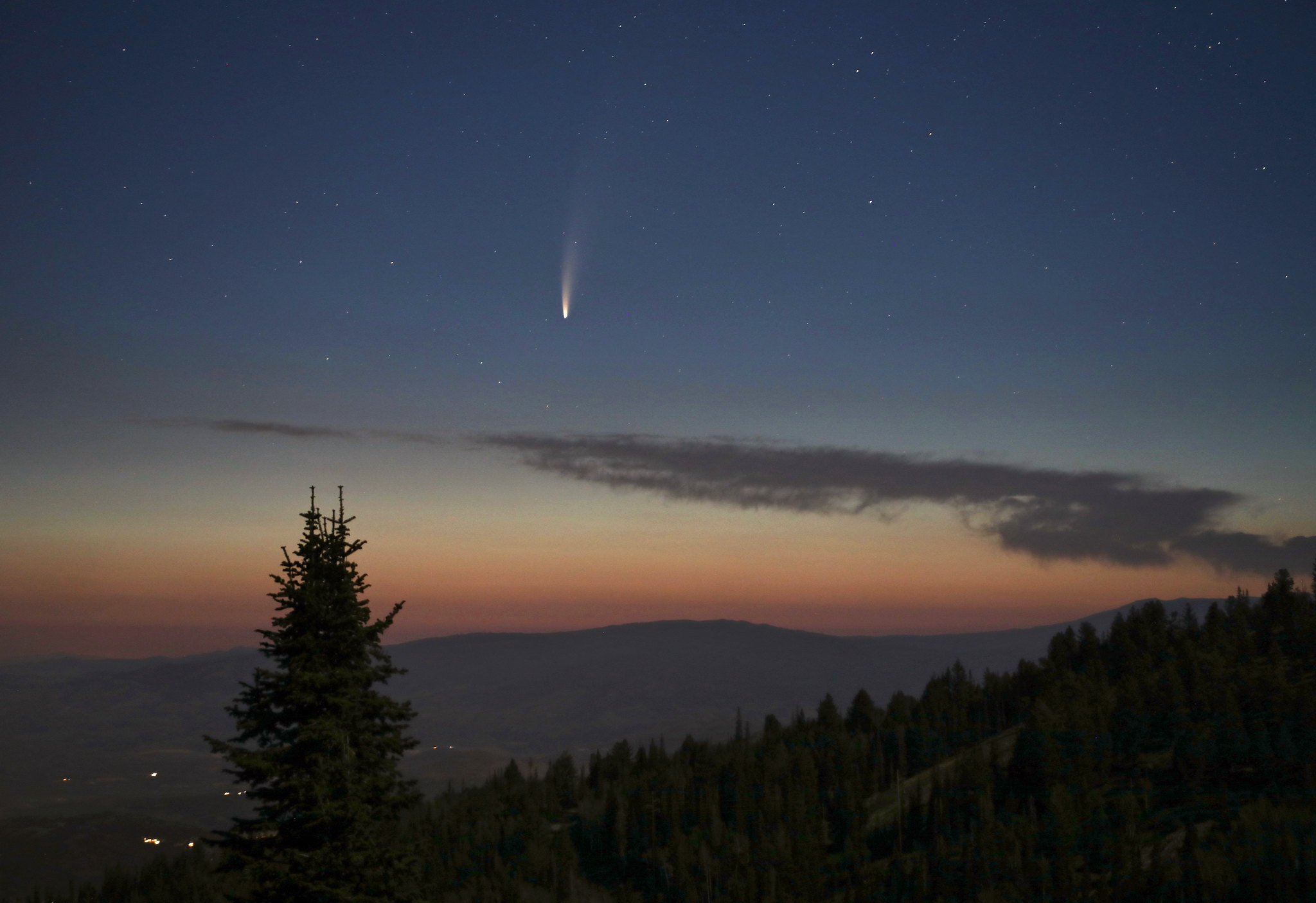
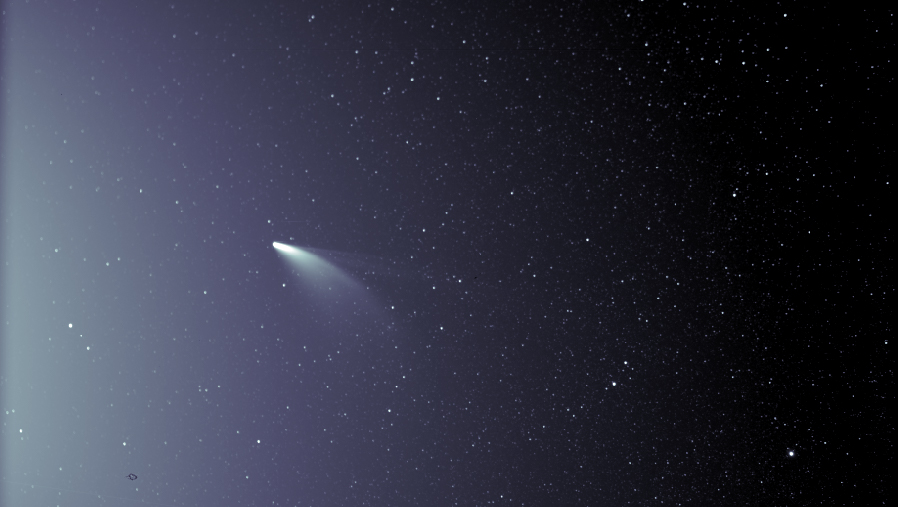
If you spot Comet NEOWISE, let us know! Send images and comments to spacephotos@space.com to share your views.
Amateur astrophotographer Bill Dunford, a social media specialist at NASA's Jet Propulsion Laboratory (JPL), recently shared his experience photographing the comet in a video along with some helpful tips and tricks.
"In my spare time, I love to take pictures of the night sky," Dunford said. "I do this using a camera mounted to a tripod."
This part seems obvious, but Dunford adds that he puts the camera "in manual mode so that I can set the camera to leave the shutter open for several seconds to let in lots of light." A four-second exposure should do the trick, he added.
Get the Space.com Newsletter
Breaking space news, the latest updates on rocket launches, skywatching events and more!
More: Amazing photos of Comet NEOWISE from the Earth and space
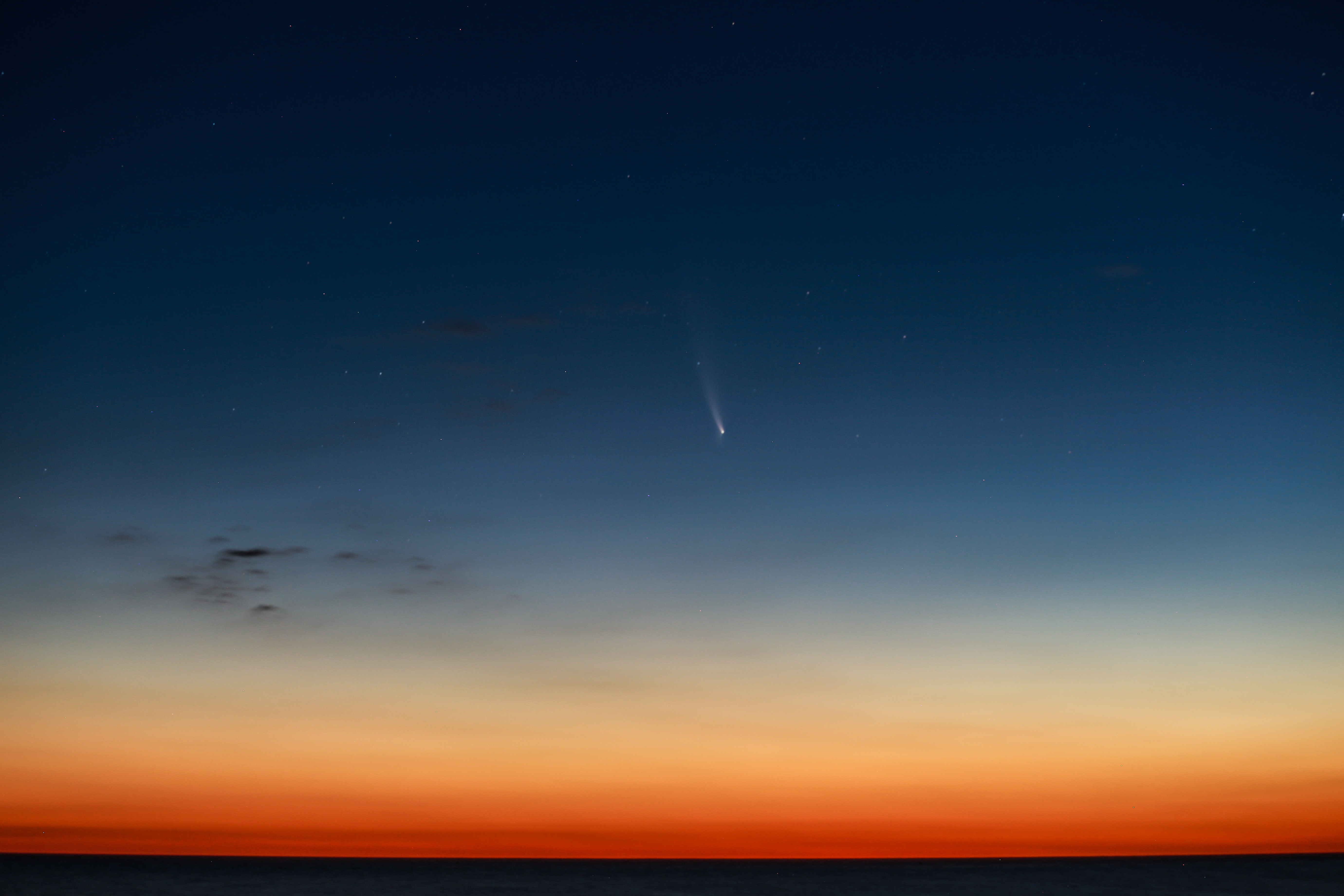
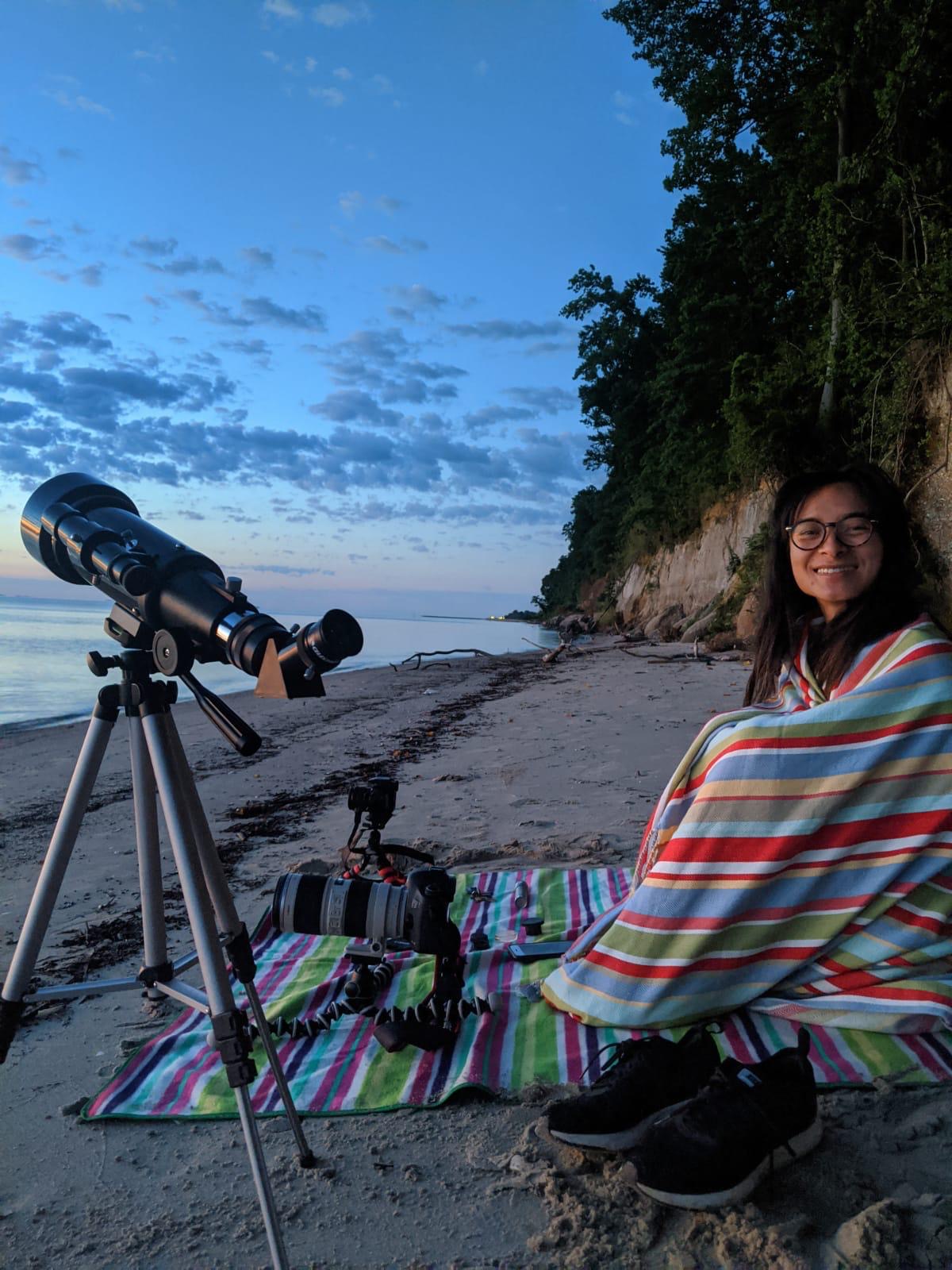
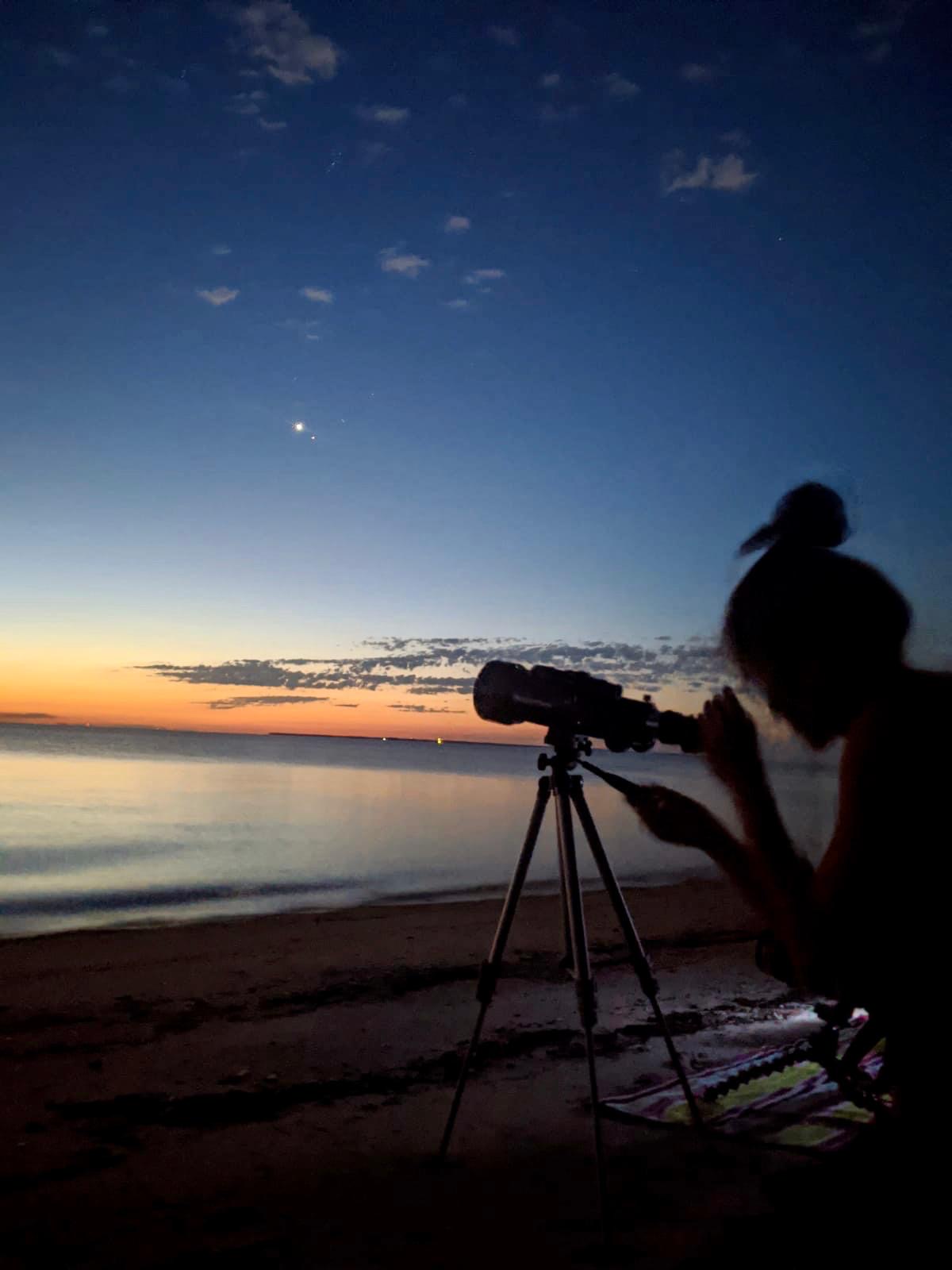
He shared some of the photos of Comet NEOWISE that he took using that four-second exposure and added that he made sure to go skywatching far away from bright city lights.
When Dunsford captured the image below, Comet NEOWISE was visible in the early-morning sky before sunrise. The comet has since left the predawn sky and is now visible in the evening just after sunset.
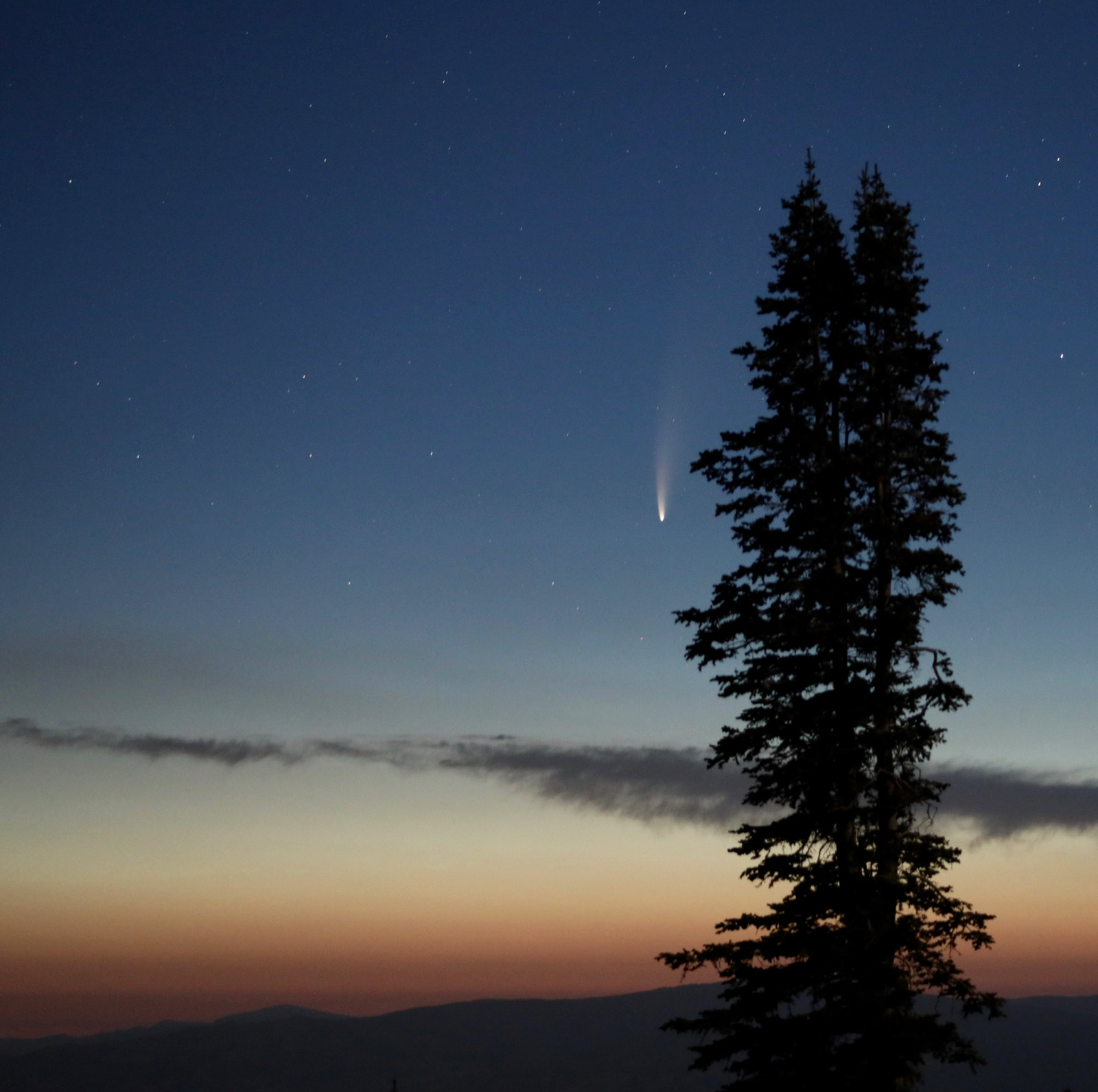
"On a clear morning at about 4:30 a.m. I went to a location far from city lights," Dunford said. "I could see the comet with the naked eye so I zoomed in on it and exposed each shot for about four seconds."
Dunford also shared that he "did a little post-processing using photo editing software." Using this software, he was able to brighten up his photos a bit, "draw out the vibrancy of the colors and clean up some noise. The end result was close to how the scene looked in person which, I have to tell you, was beautiful."
Lastly, he shared: "I really hope you get a chance to see the Comet NEOWISE and all the other wonders of the night sky."
Here's a NASA sky map showing where to look for Comet NEOWISE in the July's sky.
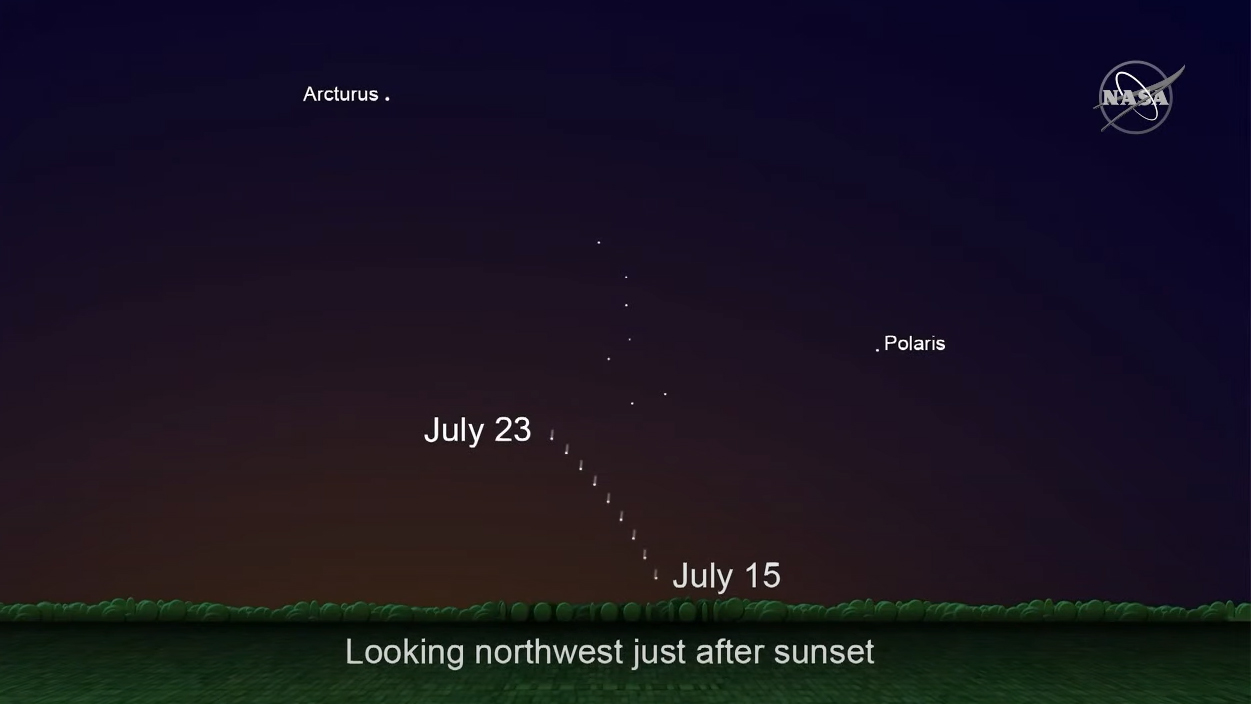
Editor's note: If you snap an amazing photo or video of Comet NEOWISE in the night sky? Let us know! To share images and videos for a possible story or gallery, send images and comments in to spacephotos@space.com.
Email Chelsea Gohd at cgohd@space.com or follow her on Twitter @chelsea_gohd. Follow us on Twitter @Spacedotcom and on Facebook.
Join our Space Forums to keep talking space on the latest missions, night sky and more! And if you have a news tip, correction or comment, let us know at: community@space.com.

Chelsea “Foxanne” Gohd joined Space.com in 2018 and is now a Senior Writer, writing about everything from climate change to planetary science and human spaceflight in both articles and on-camera in videos. With a degree in Public Health and biological sciences, Chelsea has written and worked for institutions including the American Museum of Natural History, Scientific American, Discover Magazine Blog, Astronomy Magazine and Live Science. When not writing, editing or filming something space-y, Chelsea "Foxanne" Gohd is writing music and performing as Foxanne, even launching a song to space in 2021 with Inspiration4. You can follow her on Twitter @chelsea_gohd and @foxannemusic.
-
ikofig Are you sure this article was about "HOW to photograph comet NEOWISE"? Taking a picture (especially in Manual mode) requires THREE settings - Aperture, Shutter speed and ISO. Of the three only Shutter speed was mentioned!Reply -
swiggly Replyikofig said:Are you sure this article was about "HOW to photograph comet NEOWISE"? Taking a picture (especially in Manual mode) requires THREE settings - Aperture, Shutter speed and ISO. Of the three only Shutter speed was mentioned!
Indeed! I also wonder why articles like this pick what are often not exactly the better photos. There are plenty of photos out there (even my own) that are better than what they have used.
My NEOWISE









